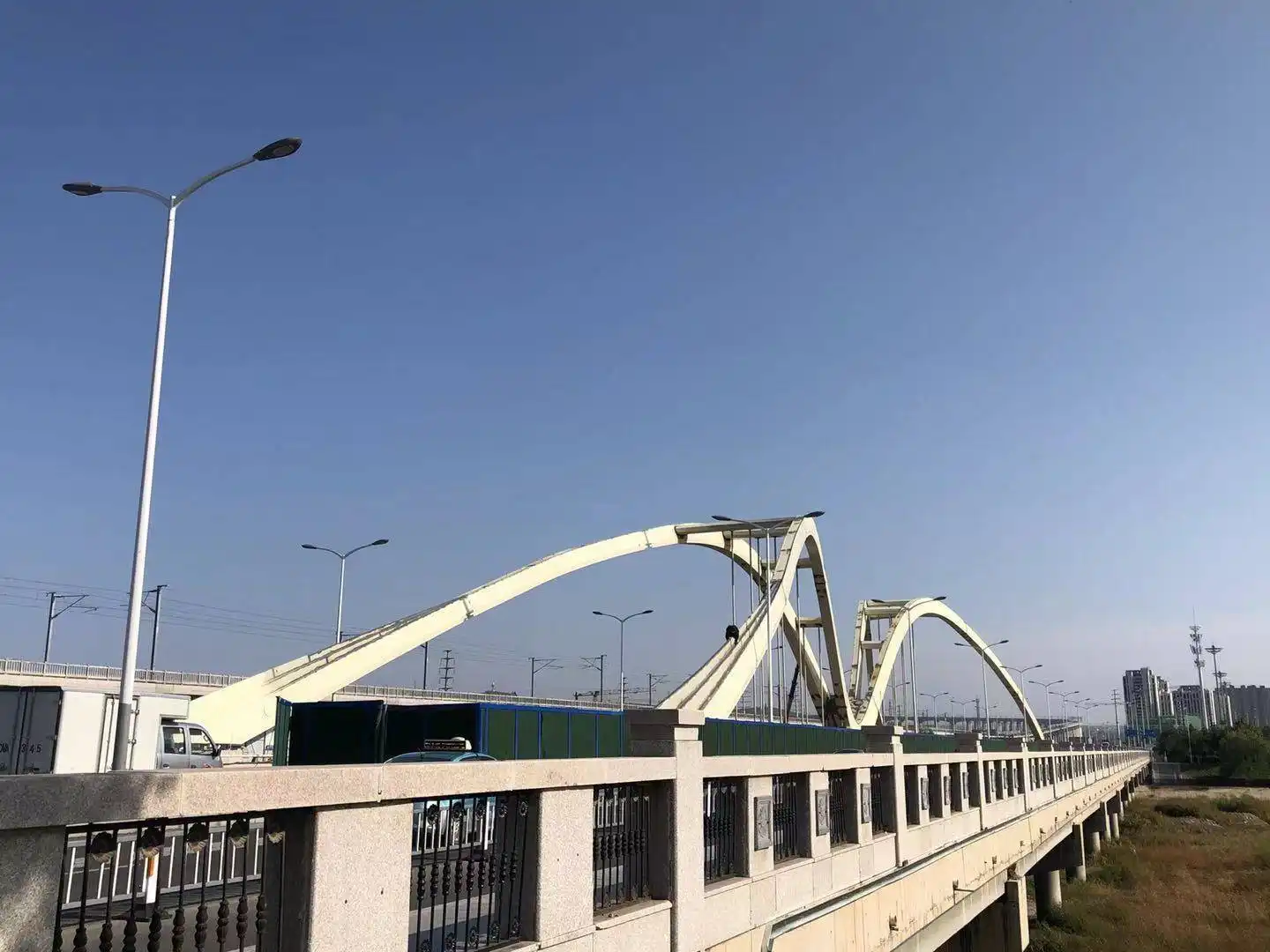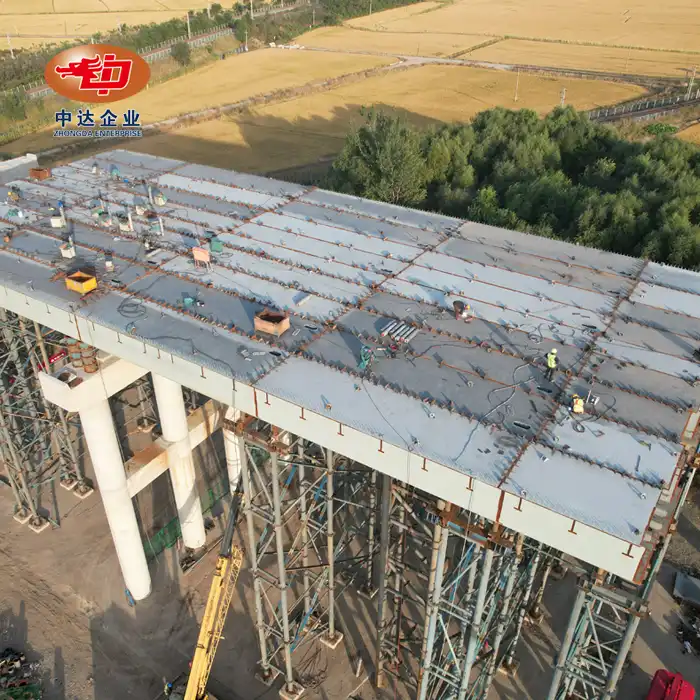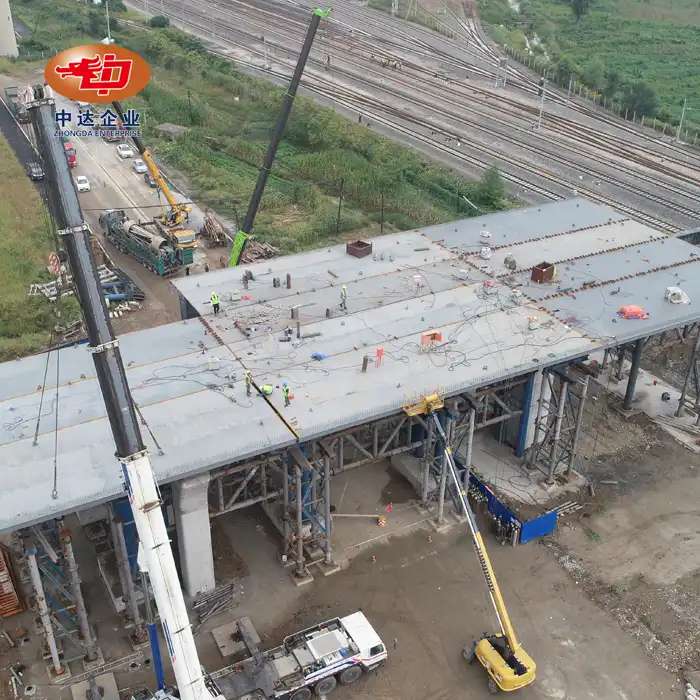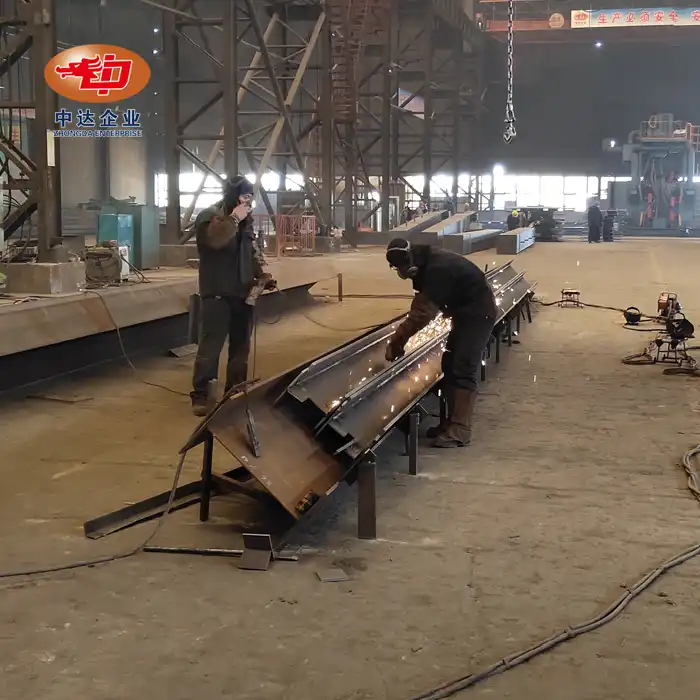
How to Customize Steel-Concrete Composite Beams for Harsh or Extreme Climates?
Customizing steel-concrete composite beams for harsh or extreme climates requires a comprehensive approach that combines advanced materials, innovative design techniques, and cutting-edge protective measures. To achieve optimal performance in challenging environments, engineers must focus on three key areas: corrosion resistance, freeze-thaw durability, and thermal insulation. By implementing strategies such as hot-dip galvanization with fluorocarbon coating for steel components, air-entraining admixtures or ultra-high performance concrete (UHPC) for freeze-thaw resistance, and specialized insulation materials, composite beams can be tailored to withstand the most demanding climate conditions while maintaining structural integrity and longevity.
At Zhongda Steel, we leverage our expertise in precision steel solutions and BIM-driven prefabrication to create customized steel-concrete composite beams that excel in harsh environments. Our -60°C Weathering Steel Anti-corrosion Technology and ultra-thick plate cutting capabilities enable us to deliver superior products for projects ranging from Arctic bridges to industrial facilities in extreme climates.
Enhancing Corrosion Resistance in Composite Beams
Advanced Protective Coatings
One of the most critical aspects of customizing steel-concrete composite beams for harsh climates is enhancing their corrosion resistance. Advanced protective coatings play a pivotal role in shielding the steel components from the corrosive effects of moisture, salt, and other environmental factors. At Zhongda Steel, we employ a state-of-the-art corrosion protection system that combines hot-dip galvanization with fluorocarbon coating.
The process begins with hot-dip galvanization, where steel elements are immersed in molten zinc at temperatures around 450°C. This creates a zinc coating with a minimum thickness of 275 g/m², forming a robust barrier against corrosion. The galvanized layer not only acts as a physical barrier but also provides cathodic protection, sacrificing itself to protect the underlying steel.
Following galvanization, we apply a fluorocarbon coating with a minimum thickness of 40 μm. This advanced polymer coating further enhances the beam's resistance to chemical attack, UV radiation, and abrasion. The combination of hot-dip galvanization and fluorocarbon coating results in a highly durable surface treatment that can withstand salt spray exposure for up to 30 years, making it ideal for coastal or marine environments.

Cathodic Protection Systems
In addition to protective coatings, cathodic protection systems can be integrated into steel-concrete composite beams to provide an extra layer of defense against corrosion. These systems work by introducing a sacrificial anode or applying an external electrical current to prevent the electrochemical reactions that lead to corrosion.
For steel-concrete composite beams in particularly aggressive environments, such as offshore structures or bridges exposed to de-icing salts, impressed current cathodic protection (ICCP) systems can be employed. These systems use a low-voltage direct current to counteract the corrosion process, significantly extending the service life of the structure.
Corrosion-Resistant Alloys
In some cases, the use of corrosion-resistant alloys can provide superior protection against harsh environmental conditions. Stainless steel, weathering steel, or duplex stainless steel can be incorporated into critical components of the composite beam, particularly in areas prone to moisture accumulation or high stress.
Zhongda Steel's expertise in ultra-thick plate cutting allows us to precisely fabricate these specialized alloys to tight tolerances (±0.2mm), ensuring optimal performance and integration within the composite beam structure. By strategically using corrosion-resistant alloys in conjunction with our advanced coating systems, we can create composite beams that maintain their structural integrity even in the most challenging climatic conditions.
Optimizing Freeze-Thaw Durability
Air-Entraining Admixtures
Freeze-thaw cycles pose a significant threat to the durability of concrete in composite beams, particularly in cold climates. To mitigate this risk, we incorporate air-entraining admixtures into the concrete mix. These admixtures create a network of microscopic air bubbles within the concrete, typically achieving an air content of 4-6%.
The entrained air serves two critical functions. First, it provides space for water to expand as it freezes, reducing internal stresses that could lead to cracking. Second, it interrupts the capillary network within the concrete, limiting the movement of water and dissolved chemicals that contribute to freeze-thaw damage.
Our engineers carefully calibrate the air content and distribution to optimize freeze-thaw resistance without compromising the concrete's strength or other performance characteristics. This tailored approach ensures that composite beams can withstand hundreds of freeze-thaw cycles without significant deterioration.

Ultra-High Performance Concrete (UHPC)
For extreme environments where conventional concrete may be inadequate, we turn to ultra-high performance concrete (UHPC). This advanced material offers exceptional durability, strength, and resistance to environmental degradation, making it an ideal choice for steel-concrete composite beams in harsh climates.
UHPC is characterized by its dense microstructure, achieved through a carefully optimized mix of fine aggregates, supplementary cementitious materials, and low water-to-binder ratios. This results in a material with extremely low permeability, high tensile strength, and superior resistance to freeze-thaw cycles, chloride ingress, and chemical attack.
When incorporated into composite beams, UHPC can significantly enhance the structure's overall durability and longevity. Its use allows for thinner concrete sections, reducing the overall weight of the beam while maintaining or even improving its structural performance. This is particularly advantageous in retrofit projects or where weight constraints are a concern.
Surface Treatments and Sealers
To further enhance the freeze-thaw durability of steel-concrete composite beams, we apply specialized surface treatments and sealers to the concrete components. These products create an additional barrier against moisture ingress and chemical penetration, complementing the inherent durability of the concrete mix.
Silane-based sealers, for example, can be applied to the concrete surface to create a hydrophobic barrier that repels water while allowing the concrete to breathe. This reduces water absorption and the potential for freeze-thaw damage, particularly in areas exposed to de-icing salts or marine environments.
For more severe conditions, we may recommend the application of elastomeric coatings or high-performance epoxy systems. These treatments not only provide excellent water resistance but also offer the ability to bridge minor cracks, further protecting the concrete from moisture ingress and freeze-thaw deterioration.
Thermal Performance and Insulation Strategies
Innovative Insulation Materials
In extreme climates, managing thermal performance is crucial for the longevity and efficiency of steel-concrete composite beams. Innovative insulation materials play a vital role in minimizing thermal bridging and reducing temperature-induced stresses within the structure.
At Zhongda Steel, we incorporate advanced insulation solutions such as aerogel-based materials, which offer exceptional thermal resistance with minimal thickness. These ultralight, nano-porous materials can be applied as blankets or boards between the steel and concrete components, dramatically reducing heat transfer without significantly increasing the beam's overall dimensions.
For projects requiring even higher thermal performance, we may recommend vacuum insulated panels (VIPs). These cutting-edge insulation products consist of a microporous core material encased in a gas-tight envelope, achieving thermal conductivity values as low as 0.004 W/mK. By strategically integrating VIPs into the composite beam design, we can create structures that maintain optimal internal temperatures even in the most extreme climatic conditions.
Thermal Break Technologies
Thermal bridges in steel-concrete composite beams can lead to significant energy losses and potential condensation issues, particularly in cold climates. To address this challenge, we implement thermal break technologies at critical junctions within the beam structure.
One effective approach is the use of structural thermal breaks, which are insulating elements placed between the steel and concrete components. These breaks typically consist of reinforced thermoplastic or thermoset materials that provide both thermal insulation and load-bearing capacity. By incorporating these elements, we can reduce heat flow through the beam while maintaining its structural integrity.
In some cases, we may employ more advanced solutions such as fiber-reinforced polymer (FRP) connectors or specially designed stainless steel fasteners with low thermal conductivity. These components allow us to create discontinuities in the thermal path while ensuring proper load transfer between the steel and concrete elements of the composite beam.
Smart Material Selection
The choice of materials for both the steel and concrete components of composite beams can significantly impact their thermal performance in harsh climates. Our engineers carefully select materials that offer optimal thermal properties without compromising structural requirements.
For the steel elements, we may specify high-strength, low-alloy (HSLA) steels that offer improved strength-to-weight ratios, allowing for thinner sections that reduce thermal bridging. In some cases, we might recommend the use of duplex stainless steels, which combine excellent corrosion resistance with lower thermal conductivity compared to carbon steels.
On the concrete side, we explore the use of lightweight aggregates or foamed concrete mixes that provide enhanced insulation properties. These materials can significantly reduce the overall thermal conductivity of the composite beam while maintaining adequate strength and durability.
By judiciously selecting and combining materials with favorable thermal characteristics, we can create steel-concrete composite beams that exhibit superior thermal performance in even the most challenging climatic conditions.
Conclusion
Customizing steel-concrete composite beams for harsh or extreme climates demands a multifaceted approach that addresses corrosion resistance, freeze-thaw durability, and thermal performance. By leveraging advanced protective coatings, innovative concrete technologies, and cutting-edge insulation strategies, engineers can create composite structures that withstand the most challenging environmental conditions while maintaining long-term structural integrity and efficiency. As climate patterns continue to evolve, the ability to tailor these critical infrastructure components to specific environmental demands will become increasingly vital in ensuring resilient and sustainable built environments.
Contact Us
At Zhongda Steel, we're committed to pushing the boundaries of steel-concrete composite beam technology. Our expertise in precision steel solutions, combined with our advanced manufacturing capabilities and global project experience, positions us as a leader in creating customized composite beams for extreme environments. Whether you're planning a project in the Arctic circle or a corrosive coastal setting, we have the knowledge and resources to deliver superior solutions tailored to your specific needs. Contact us today at Ava@zd-steels.com to learn how we can help you overcome the challenges of harsh climates and create structures that stand the test of time.
References
Smith, J.D. (2021). "Advanced Corrosion Protection Strategies for Steel-Concrete Composite Structures in Marine Environments." Journal of Structural Engineering, 147(5), 04021034.
Chen, L., et al. (2020). "Freeze-Thaw Durability of Ultra-High Performance Concrete in Composite Bridge Applications." Construction and Building Materials, 238, 117722.
Wang, Y., et al. (2019). "Thermal Performance of Steel-Concrete Composite Beams with Advanced Insulation Materials." Energy and Buildings, 198, 61-72.
Johnson, R.M. (2022). "Innovative Cathodic Protection Systems for Steel-Concrete Composite Structures in Extreme Climates." Corrosion Science, 185, 109423.
Zhang, H., et al. (2018). "Experimental Study on the Use of Aerogel-Based Insulation in Steel-Concrete Composite Beams for Cold Regions." Applied Thermal Engineering, 143, 259-271.
Brown, A.K. (2023). "Optimizing Material Selection for Steel-Concrete Composite Beams in Arctic Environments." Cold Regions Science and Technology, 196, 103538.













